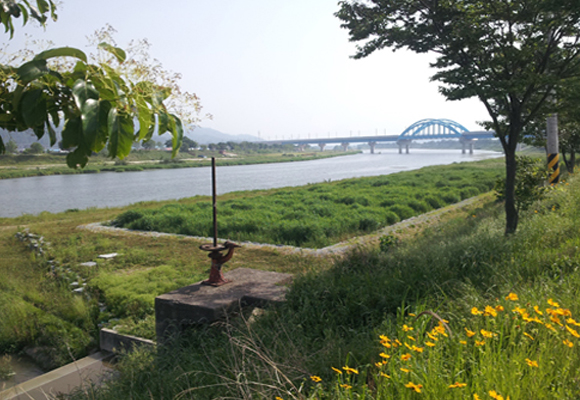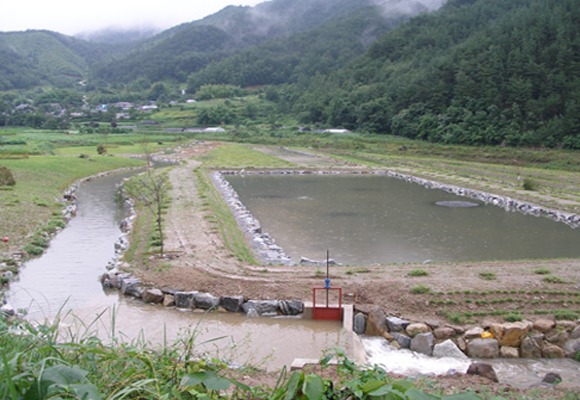APPLICATION AREA
- HOME
- APPLICATION AREA
- Non-point Source Pollution Reduction Wetland
Non-point Source Pollution Reduction Wetland
Initial rainfall reservoir is arranged to collect all of the high-concentration initial rainfall runoff and always treat
pollutants under the identical operating conditions
- Flexible operation regardless of rainfall intensity, rainfall characteristics, and rainfall frequency
- Efficient operation of purification wetland, high-efficiency treatment possible
High-efficiency eco-friendly purification wetland that overcomes the shortcomings of non-point resource pollution
reduction technology of natural type and device type
- Expansion of field applicability for urban non-point source pollution reduction wetland with less than 1/5 of the site area required compared to general constructed wetland purification technology
- High efficiency purification technology capable of maintaining over 80% of BOD removal efficiency at all times
- Semi-permanent purification wetland that does not require replacement of filter media, providing the highest maintenance efficiency
- Establishment of regular support system for maintenance of 공법사
Can be used simultaneously as polluted stream purification wetland and lake water purification wetland
- Rainy day: Non-point source pollution (initial rainfall) purification wetland
- Bright day: Polluted stream purification wetland, lake water purification wetland, eco-friendly ecological wetland park
SNR Process Application Examples of Non-point Resource Pollution Reduction Wetland
-
Urban non-point source pollution reduction wetland
- Initial rainfall treatment for roads, parking lots, etc.
- Creation of ecological parks and green spaces in the city center
-
Water supply source protection area, non-point source pollution reduction wetland in farming and fishing village areas
- Treatment of farmland, forest rainfall runoff, etc.
- The role of a buffer and purification zone to prevent direct inflow of non-point source pollutants into water supply sources
- Creation of high-efficiency constructed wetlands in the waterfront area and providing habitat for animals and plants
-
Non-point source pollution reduction wetland such as golf courses and amusement parks
- Establishment of a water circulation system using treated water in connection with ponds, etc.
- Treated water can be used for various reuses such as landscaping and cleaning


